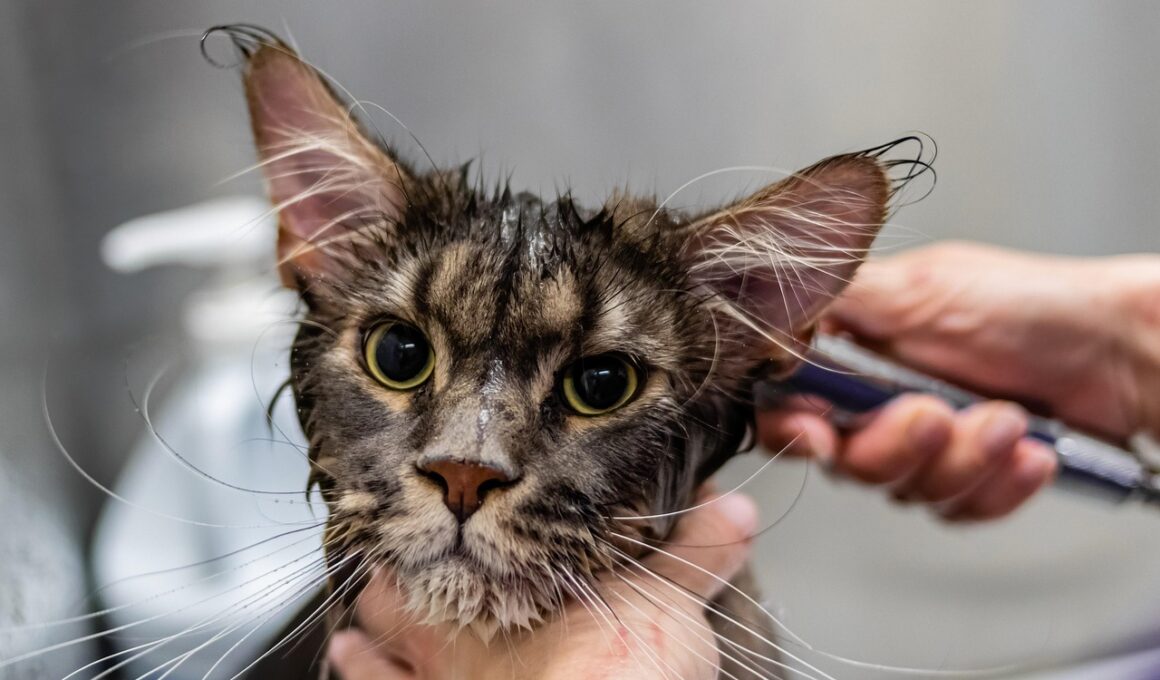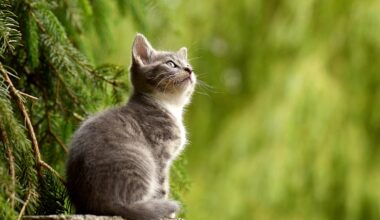Dealing with Cat Fur in Multi-Cat Households
Managing cat fur in multi-cat households can be quite a task, particularly if your feline friends are prone to shedding. One of the first strategies for managing the fur situation effectively is establishing a grooming routine. Regular grooming is essential as it helps minimize fur around your home. Use the right grooming tools like brushes suited for each cat’s coat type, whether long or short. Tools such as de-shedding brushes, slicker brushes, or even grooming gloves can be beneficial. Beyond just grooming tools, consider using a lint roller for quick clean-ups of surfaces. Vacuuming becomes essential as well; using a vacuum specific for pet hair can save you significant time. Another helpful tip involves utilizing pet-friendly fabric softeners when washing your cats’ bedding or blankets. Not only will this help reduce static cling, but it also keeps the fabrics fresh. Remember to reward your cats with treats during and after grooming to make it a positive experience. Establishing a cooperative atmosphere for grooming will yield better results over time. It’s crucial to stay patient and consistent in your grooming efforts to maintain a comfortable environment for your cats.
Tools and Techniques for Cat Grooming
For successful grooming in a multi-cat household, it’s necessary to identify and utilize effective tools and techniques that cater to various cat requirements. Each cat has different grooming needs based on coat type and temperament. When selecting grooming tools, opt for high-quality brushes that prevent skin irritation. Look for adjustable brushes which can adapt according to your cat’s fur length. Additionally, invest in a grooming table or a non-slip surface to keep cats secure during grooming sessions. One technique to employ is to groom cats sequentially, starting with the most tolerant cat and ending with the least. This approach minimizes stress for the more anxious cats while allowing the confident ones to adjust to the grooming setup. Consider implementing a designated grooming area with adequate lighting, ensuring it’s quiet with minimal distractions. Furthermore, regular bath sessions can also keep fur manageable by removing loose hairs and dirt. Always remember to use cat-friendly shampoos recommended by your veterinarian, as this promotes healthy skin and coat while effectively tackling shedding issues.
Creating an efficient cleaning regime is crucial for managing cat fur in homes with multiple cats. A good practice is to establish a daily cleaning schedule, focusing on high-traffic areas where cats frequently roam. Start by utilizing an effective vacuum equipped with strong suction and specialized attachments for removing pet hair from carpets and upholstery. Moreover, quickly wiping down surfaces with damp cloths helps capture stray fur that tends to accumulate. Consider investing in multi-surface cleaners designed for pet owners; they often contain deodorizing properties that keep your home smelling fresh. Additionally, ensure that all cat litter boxes are cleaned regularly, as litter can attract fur and add to your cleaning tasks. Remember, maintaining multiple litter boxes can significantly reduce mess and odors in the house. Designate a closet or storage area for your cleaning supplies, making it easy to access everything needed for swift fur removal. Collaborating with other household members in maintaining the cleaning schedule will help divide responsibilities and ensure everyone’s engaged in maintaining cleanliness.
Diet and Health Impact on Shedding
One often overlooked aspect affecting shedding in cats in multi-cat households is their diet. Proper nutrition is key when it comes to maintaining healthy fur and skin. High-quality cat food containing essential fatty acids such as omega-3 and omega-6 has been proven to improve coat health significantly. To keep your cats hydrated, ensure that they have easy access to fresh water daily. Sometimes, dry skin can contribute to excess shedding, so providing a balanced diet helps maintain moisture. Regular vet check-ups are also essential, as health issues can exacerbate shedding. If your cat is shedding excessively, consult your veterinarian for customized dietary recommendations. Transitioning to a new diet should be done gradually to prevent digestive upset; even simple additions like fish oil supplements can be beneficial. Observing your cats post-diet change will reveal improvements in their coats and reductions in shedding. Health plays a significant role; monitored weight can affect grooming presence. Consider maintaining a log of your cats’ eating habits and any changes in fur conditions to share with your veterinarian for optimal care.
Creating a comfortable environment for your cats is also crucial for managing fur in multi-cat households. Focus on providing spaces where each cat can retreat for alone time, especially during grooming. This not only helps them feel secure but also can prevent disputes over territory. Adding multiple cat trees or cozy beds allows each cat to have its own space to relax, contributing to reduced stress levels. Stress can lead to increased shedding, so maintaining a peaceful home environment is vital. Incorporate thorough cleaning into your cat care routine, particularly in areas where they sleep or spend a lot of time. Having designated cat zones with accessible toys and scratching posts can promote healthy behavior. Furthermore, enriching your cats’ lives with play can reduce anxiety while keeping them active. If conflict arises during grooming, consider cat pheromone diffusers to instill calm and lessening fear. Learning each cat’s individual behavior during grooming helps tailor your approach, accommodating their specific needs while promoting a happier grooming experience, thus alleviating issues associated with fur management.
Involving Family: Working Together
Family involvement is paramount when implementing a grooming routine in multi-cat households. Engaging everyone provides various advantages, including shared responsibility and improved cat relations. Start by defining roles for each family member during grooming sessions. For younger children or those not directly involved in grooming, they can help with comforting and rewarding cats afterwards. Adults can take the lead with grooming while ensuring safety protocols are in place, such as using gentle techniques. Setting a collective cleaning schedule fosters cooperation in addressing fur accumulation throughout your home. Teach family members how to recognize changes in your cats and observe their overall behavior and health. Discussing your cats’ grooming needs also cultivates empathy and understanding. Allocating time for grooming encourages bonding experiences among family members and fosters healthy interactions with cats. Conducting family training workshops to learn about proper grooming techniques ensures consistency across the household. Maintain an open dialogue about individual cat preferences; what works for one cat may not work for another. Family involvement leads to a more supportive and loving environment for your feline companions.
In conclusion, effectively managing cat fur in multi-cat households requires a combination of patience, proper tools, and strategies. By developing a consistent grooming routine along with a suitable cleaning schedule, you promote a harmonious living space for both your cats and your family. Paying attention to diet and health remains instrumental in fur management. Ensure that every family member is involved, fostering teamwork and love for your feline friends. This teamwork reduces the burden on any single family member and instills a sense of shared responsibility. As you continue this endeavor, observing your cats’ preferences will yield better results and adjustments tailored to their needs. Remember, it’s all about routine and adjustments based on what works best for your specific household. Treating grooming as a positive experience creates lasting bonds and improves relationships among household cats, promoting a stress-free environment. Embracing these techniques will result in a home that’s cleaner, happier, and healthier for both you and your beloved cats.



